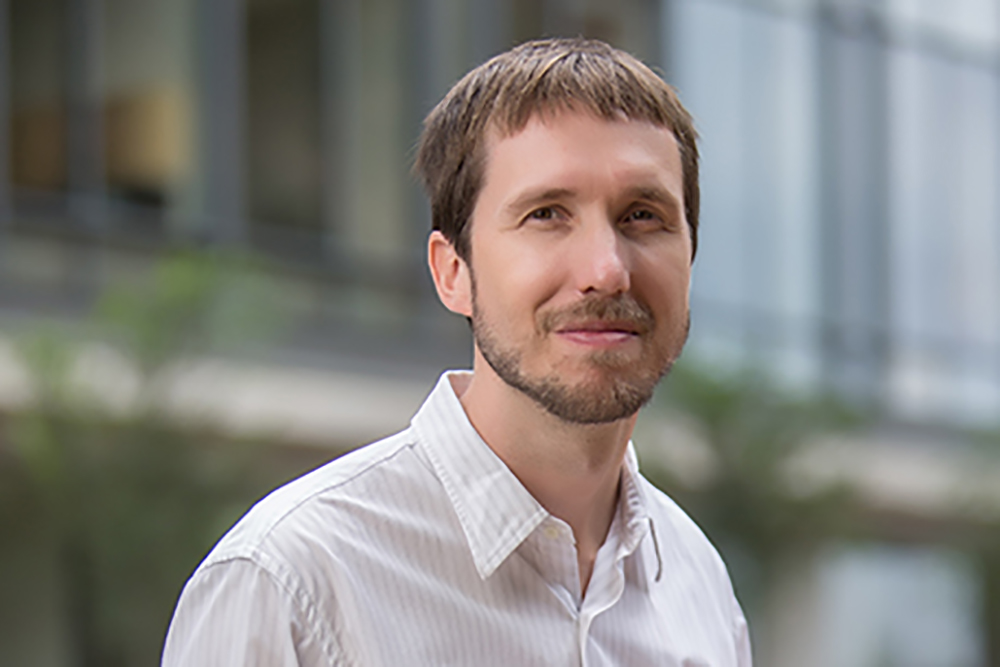With a focus on stem cells, Jeremy Purvis, PhD, wants to tap the power of computer modeling to develop regenerative medicine solutions to medical conditions.

Jeremy Purvis, PhD, assistant professor of genetics at the UNC School of Medicine, received an NIH Director’s New Innovator Award for his work using computer models to design ways to convert human stem cells into functionally differentiated cell types – the crux of stem cell therapy and regenerative medicine, which aims to repair damaged tissue and organs that cannot be repaired with current therapies.
The New Innovator Award program is different from traditional National Institutes of Health grants. It is designed specifically to support unusually creative investigators with highly innovative research ideas in the early stages of their careers.
For Purvis, who is also a member of the UNC Lineberger Comprehensive Cancer Center, the innovation involves taking an old idea and applying it to medical frontiers.
“These days, computational models are used to track of all sorts of complex phenomena such as tropical storms, stock prices, and professional sporting events,” Purvis said. “But they haven’t been exploited to predict the differentiation choices of stem cells. The goal of this project is to use computational models to design new and efficient protocols for converting human stem cells into specific differentiated cell types.
“Stem cells hold enormous promise for regenerating damaged or diseased tissues. If their full potential is realized, they could be used to produce, for example, dopaminergic neurons for treating Parkinson’s disease or functional lung cells to treat pulmonary diseases.” Purvis said. “The problem is that we don’t always understand how to make a stem cell turn into a particular cell type. Our lab thinks that computational models can help us find the right set of steps to make specific kinds of cells.”
Purvis uses time-lapse microscopy to monitor the expression of key developmental markers inside cells over time as the stem cells differentiate. This approach provides Purvis and his team a kind of “real-time” narrative view of cellular fate decisions in single cells.
Then Purvis and his colleagues apply a series of systematic perturbations to the differentiating cells. They monitor the cells through live-cell microscopy, and they integrate these new measurements into the working model. The trained model then becomes a predictive tool: it can perform thousands of virtual experiments to identify a set of perturbations that are predicted to alter stem cell fate in a prescribed way.
“As proof of principle, we will use this approach to produce precise combinations of human lung progenitor cells that could be used to treat pulmonary diseases, such as pulmonary fibrosis, emphysema, or interstitial lung disease,” Purvis said. “UNC has a tremendous group of experts in lung biology and I look forward to learning from my colleagues as the project unfolds.”
“In the near term,” he added, “our approach will help us manipulate stem cells to produce precise combinations of differentiated cell fates – overcoming a major hurdle in stem cell therapy. But the long-term hope is that this general approach will be useful for designing treatment schemes for other diseases and conditions such as bacterial infection or even cancers.”
Check the NIH website for a full list of the NIH Director’s New Innovator awardees. These awards are supported through the NIH Common Fund.
Media contact: Mark Derewicz, 984-974-1915, mark.derewicz@unch.unc.edu
